While Inuit have been creating graphic images for centuries—incised images on amulets and tools, inlaid skin clothing, and traditional tattoos are a few examples among many—drawing on paper as a form of artmaking was only introduced in the late 1950s I the community of Kinngait (Cape Dorset). Though new to the media of graphite pencil, pen, and paper, artists as diverse as Kenojuak Ashevak (1923–2013) and Parr (1893–1969) quickly established distinctive styles and iconographies; a decade later artists such as Jessie Oonark (1906–1985) and Luke Anguhadluq did the same in Qamani’tuaq (Baker Lake). The otherworldly forms and narrative depictions of traditional life captured in these early drawings encapsulated a so-called “norm” of what Inuit art was to look like and what the southern art market came to expect.
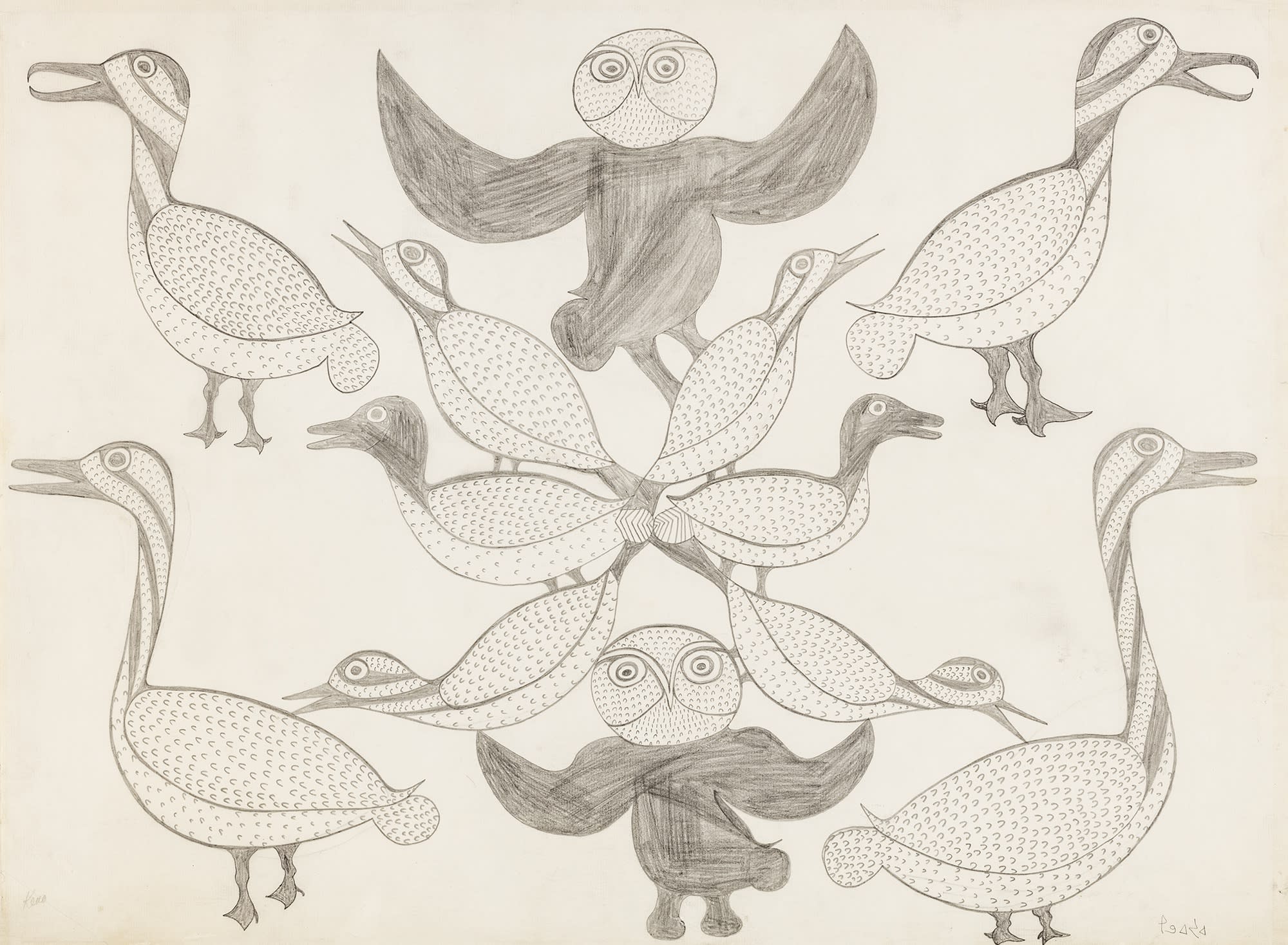
Lot 31
KENOJUAK ASHEVAK, C.C., R.C.A., (1927-2013) KINNGAIT (CAPE DORSET)
Composition (Two Owls with Birds), 1962
ESTIMATE: $8,000 — $12,000
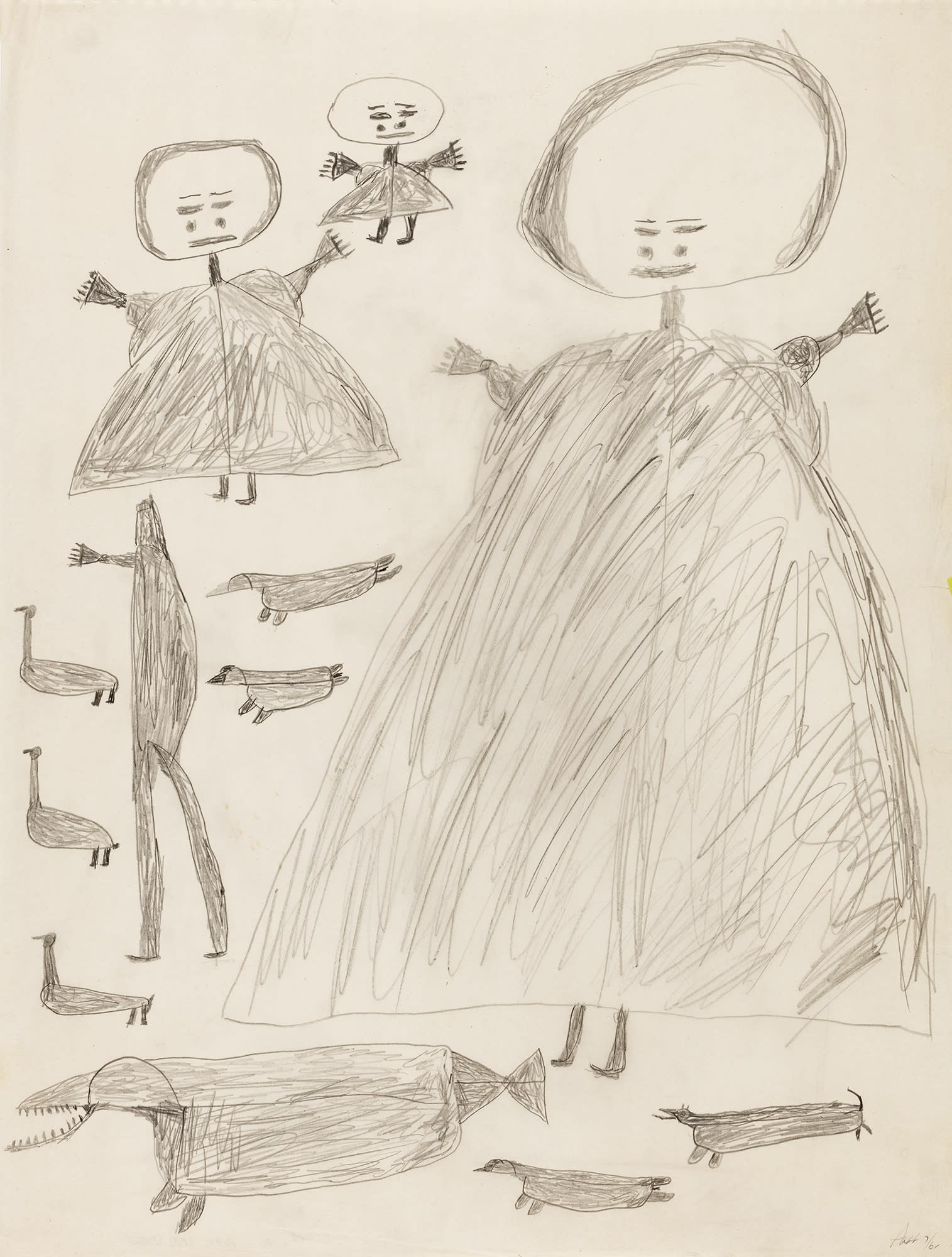
Lot 53
PARR (1893-1969) KINNGAIT (CAPE DORSET)
Man with Geese, Dog, Seals, and Whale, July 1961
ESTIMATE: $6,000 — $9,000
The results of this early period are seen in Kenojuak’s Composition from 1962 (Lot 31) and Parr’s Men with Geese, Dog, Seals and Whale from 1961 (Lot 53). At the time, both were encouraged to draw whatever was in their imagination. Kenojuak’s composition is filled with wondrous owls and fanciful birds arranged in what would become known her characteristic balance and symmetry. Parr turned to his early days of hunting for inspiration, filling the sheet with men and animals executed with his signature rapid pencil marks.
By the turn of the century however, the perception of what Inuit drawing was changed for both collectors in the South and artists in the North. This evolution can be traced through drawings made in the Kinngait Studios starting from the new millennium. Annie Pootoogook (1969–2016) provided the spark, eschewing scenes of traditional life for windows into her own world. Her tendency toward autobiographical subject matter saw influence from her grandmother Pitseolak Ashoona (1904–1983) and her mother Napachie Pootoogook (1938–2002). In her groundbreaking depictions of the interiors of Kinngait homes, people came and went, chatted on the phone, ate country food, watched TV, made love, or encountered difficult domestic situations.
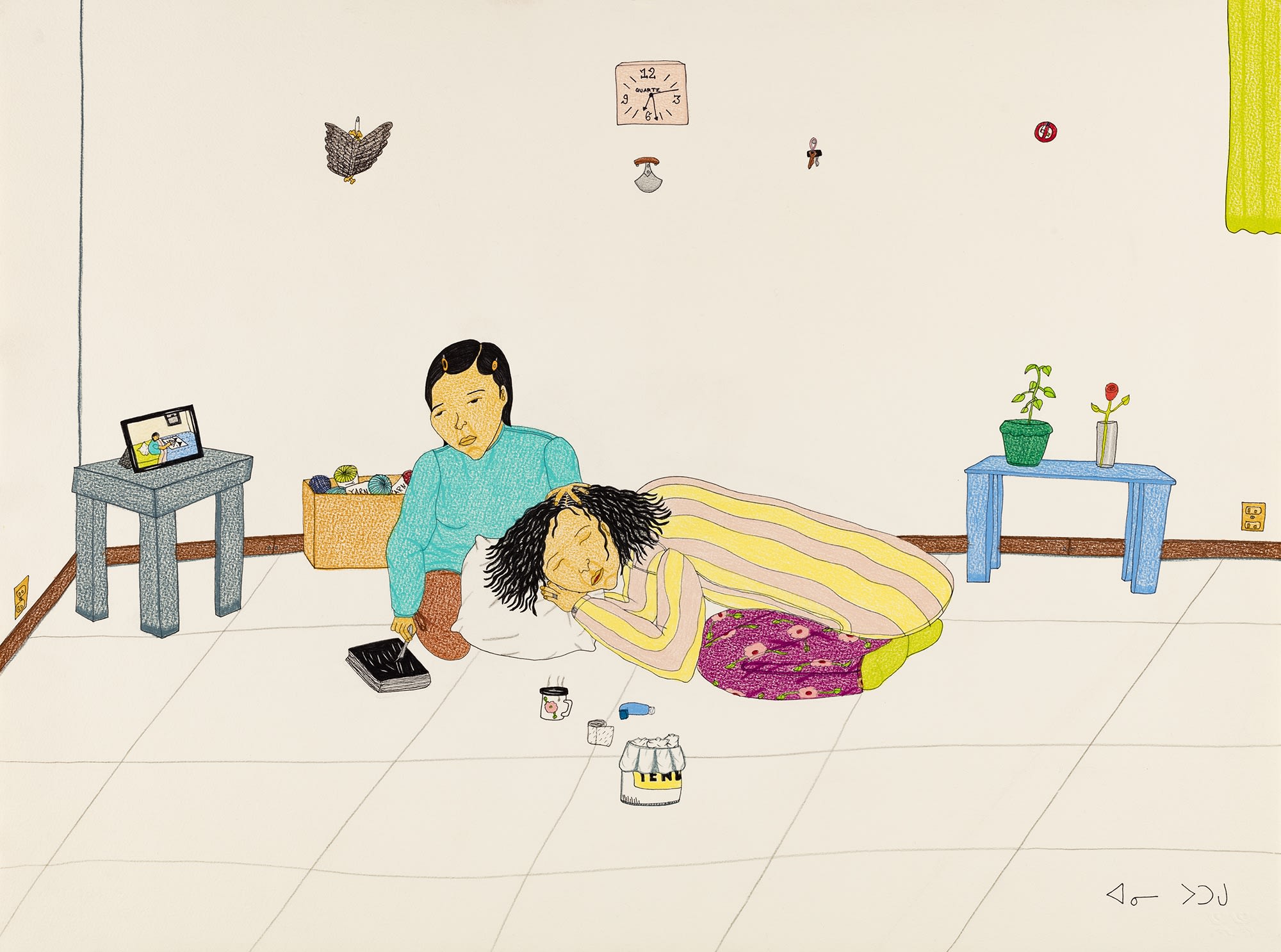
Lot 12
ANNIE POOTOOGOOK (1969-2016) KINNGAIT (CAPE DORSET)
Removing Grey Hair, 2006
ESTIMATE: $10,000 — $15,000

Lot 57
ANNIE POOTOOGOOK (1969-2016) KINNGAIT (CAPE DORSET)
Sculptor with Pipe, c. 2003-04
ESTIMATE: $10,000 — $15,000
Pootoogook’s work Removing Grey Hairs, 2006 (Lot 12) is an excellent example of her quintessential style. In it, she depicts herself removing grey hairs with tweezers from her mother who lies on the floor. The setting is a typical interior of the period; a clock and various items hang on the wall, tables are up against walls, and a window is suggested by the inclusion of the edge of a curtain. Similarly, the iconic image of Pootoogook’s father’s hands titled Sculptor with Pipe, 2003/04 (Lot 57) shows how far the artist moved on from the drawings of earlier years. It is unique and contemporary in composition while simultaneously being an emotive image, emanating love for her father Eegyvudluk Pootoogook (1931–2000), the noted sculptor and printmaker.
Such drawings found acclaim in the South and Pootoogook was vaulted into national and international stardom. Two important trends stemmed directly from this success. First, works by Inuit artists would finally be treated as contemporary art by the wider art world. Second and more importantly, Inuit artists realized that they could have the freedom to depict what they desired and still find success.

Lot 13
SHUVINAI ASHOONA (1961- ) KINNGAIT (CAPE DORSET)
Shelter, June 2005
ESTIMATE: $6,000 — $9,000
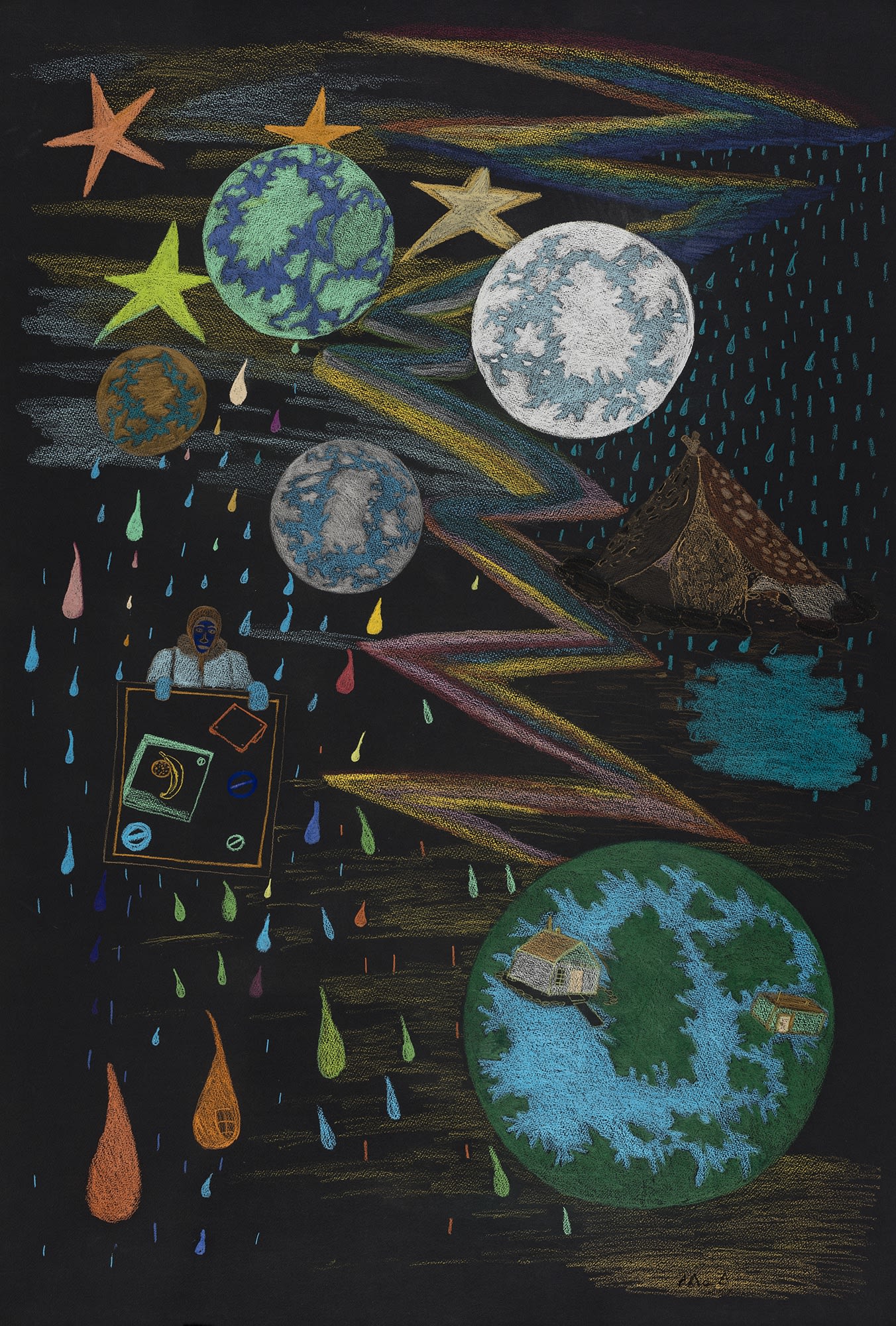
Lot 58
SHUVINAI ASHOONA (1961- ) KINNGAIT (CAPE DORSET)
Celestial Earths, c. 2011-12
ESTIMATE: $8,000 — $12,000
A contemporary drawing boom soon commenced at the Kinngait Studios and lasted over the course of ten years. Shuvinai Ashoona (b. 1961) left behind her earlier small pen landscape drawings, which were incredibly delicate and detailed, to pursue work on a larger scale. Shelter, 2005 (Lot 13) is an important example. Executed on a larger sheet of paper, the composition takes on a new boldness filled with contrast as the artist depicts in detail the ruins of an old qarmaq including the stone base and the soaring whale ribs which would hold skins for shelter. Shuvinai’s transformative stylistic journey is summed up when one considers Celestial Earths, 2011/12 (Lot 58). By this point Ashoona’s personal iconography and her signature use of vibrant colour had developed: houses appear on planets, an artist holds up her drawing, and a tent floats by in a bizarre universe.

Lot 39
TIM PITSIULAK (1967-2016) KINNGAIT (CAPE DORSET)
Kiputiit, c. 2011
ESTIMATE: $8,000 — $12,000
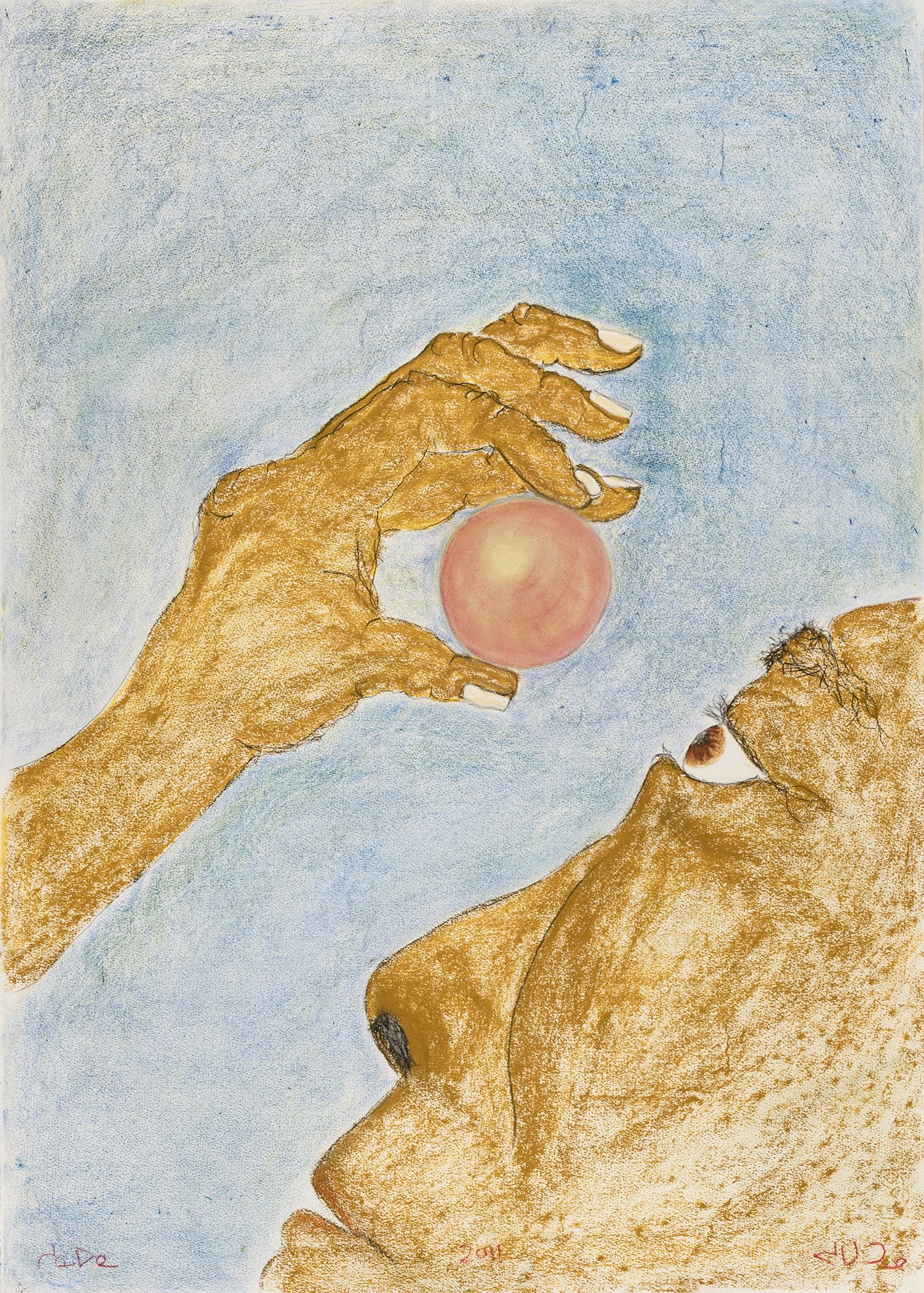
Lot 40
JUTAI TOOONOO (1959-2015) KINNGAIT (CAPE DORSET)
What is This? [Man Holding a Sphere], 2011
ESTIMATE: $6,000 — $9,000
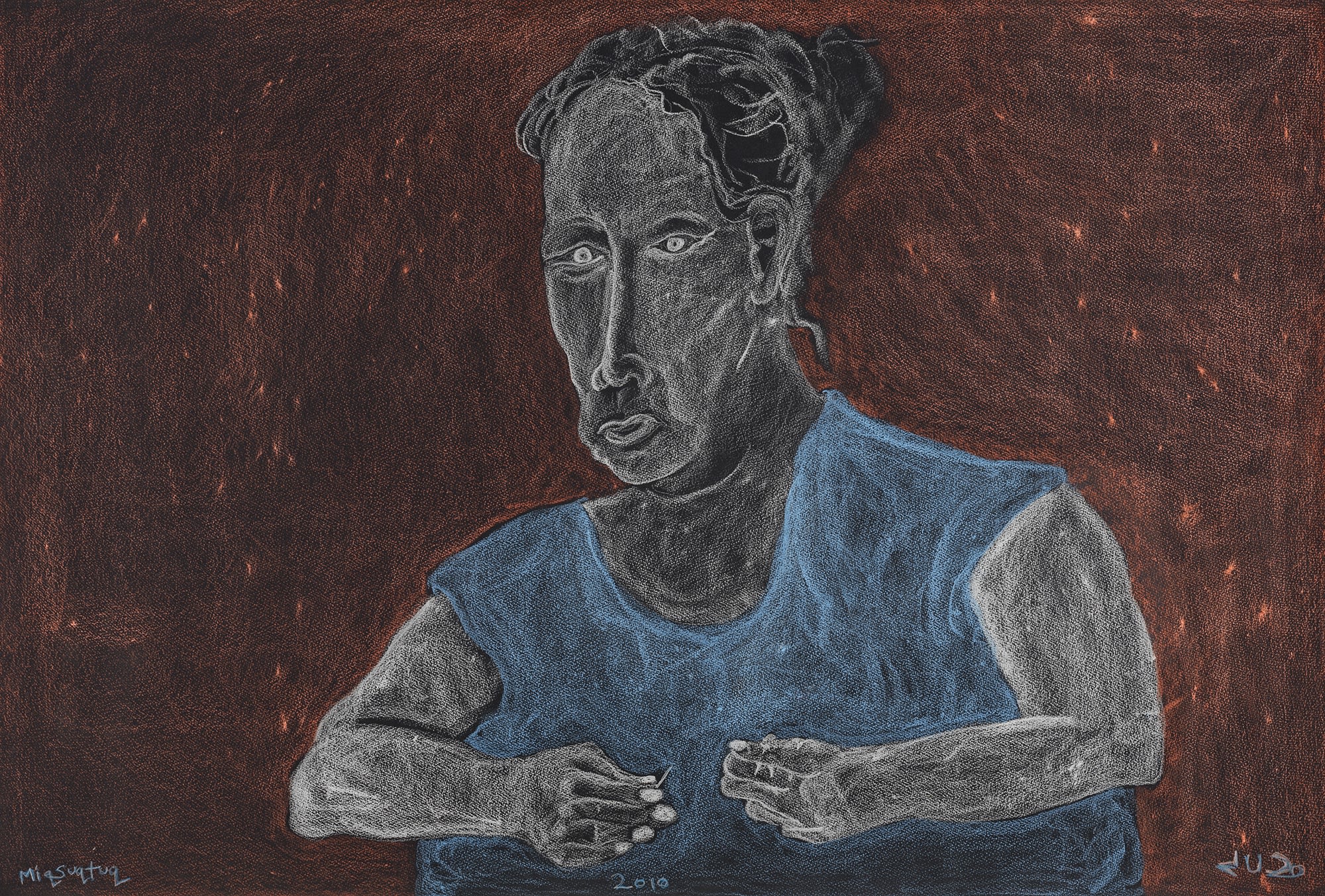
Lot 105
JUTAI TOOONOO (1959-2015) KINNGAIT (CAPE DORSET)
Miqsuqtuq (She Sews), 2010
ESTIMATE: $4,000 — $6,000
Tim Pitsiulak (1967–2016) and Jutai Toonoo (1959–2015), both of whom had no prior interest in drawing, soon joined the Kinngait Studios to draw. Pitsiulak was a hunter best known for his jewelry work at the time. After joining the studio, he began to produce atmospheric drawings based of the land like Kiputiit, c. 2011 (Lot 39), which captures an exquisite sunset view in the area between Kinngait and Mallik, a neighboring island. Like many of his drawings, it is an ode to the land that he loved so greatly.
Similarly, Jutai, known for his eclectic and unique text-based sculptures, moved easily to the medium of drawing. The work What is This? 2011 (Lot 40) encapsulates his constantly enquiring mind, depicting the profile of a man staring intently at a mysterious sphere held in his fingers. In Miqsuqtuq (She Sews) 2011 (Lot 105) he presents one of many of his images of his wife Nina sewing, exaggerating her facial features to create an almost grotesque mask. Although the imagery of this drawing might have appeared decades earlier, its style and spirit could hardly be further from that of early Inuit graphics; the drawing stands strong on its own as a completely contemporary work.

Lot 14
ITEE POOTOOGOOK (1951-2014) KINNGAIT (CAPE DORSET)
The Anglican Mission in Cape Dorset, 2006
ESTIMATE: $3,000 — $5,000
Others, too, joined this revolution. Itee Pootoogook (1951–2014), who based many of his drawings on photographs, had previously been discouraged from joining the studio as his work supposedly did not conform with the expected approach to drawing. He was, however, welcomed into the studio in 2005 and his individual style flourished. Itee focused on the world around him, often depicting buildings in the community, such as the one seen in Anglican Mission, 2006 (Lot 14). The image is excellent example of his extraordinary talent; this ordinary-looking building was known as a welcoming and warm gathering place in the early 1960s. Itee’s delicate pencil rendition of the building captures fully his personal memories of earlier times.

Lot 153
NINGIUKULU TEEVEE (1963- ) KINNGAIT (CAPE DORSET)
World Will End when Kiviuq Turns to Stone, 28 Oct 2013
ESTIMATE: $2,000 — $3,000
Years later, new artists continued to join the Kinngait Studios while only a few from the older generation remained. When Ningiukulu Teevee began drawing, she quickly established her own unique imagery often based on Inuit stories, such as the drawing World Will End When Kiviuq Turns to Stone 2013 (Lot 153). Based on the Inuit epic legend of Kiviuq, Ningiukulu’s image depicts an emotive face wherein half has turned to stone, embellishing the rock surface with elements of animals and figures.

Lot 54
KENOJUAK ASHEVAK, C.C., R.C.A., (1927-2013) KINNGAIT (CAPE DORSET)
Pyramid of Owls, c. 2003-04
ESTIMATE: $8,000 — $12,000
The elder Kenojuak Ashevak continued to draw and celebrate her beloved owl imagery but took on increasingly bold and striking compositions. Pyramid of Owls, 2003–04 (Lot 54) is a riot of colour and contrasting form where the softer foliage plays off against the solid black and blue of the central figures.
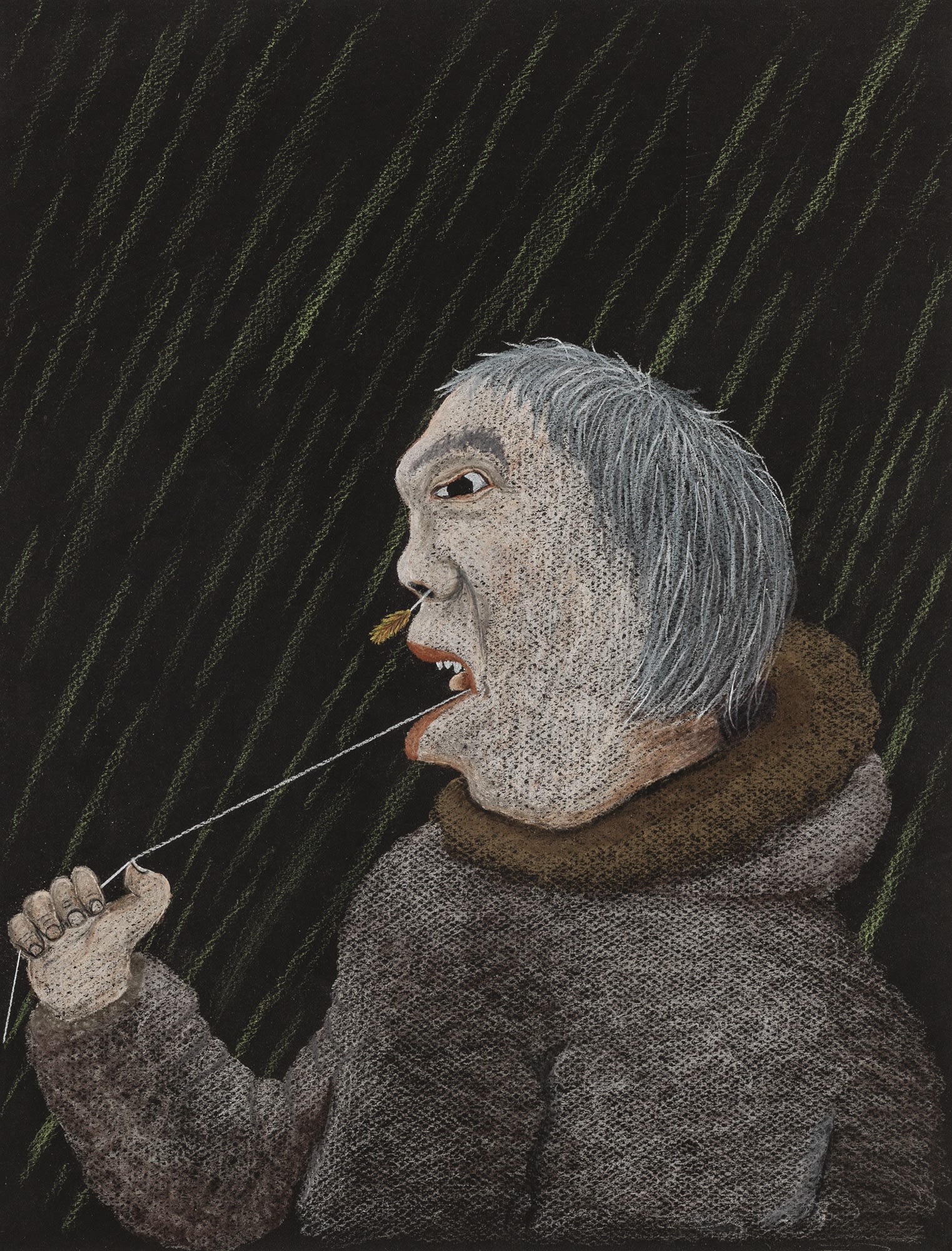
Lot 106
NICK SIKKUARK (1943-2003) KUGAARUK (PELLY BAY) / UQSUQTUUQ (GJOA HAVEN)
Man Cleaning his Nose, 2003
ESTIMATE: $1,500 — $2,500
People have often asked, why Kinngait and why these artists? The answer is that the studio in Kinngait was far more established and successful, and creativity was encouraged. This makes an artist such as Nick Sikkuark (1943–2013) quite interesting, but sadly very much an outlier. Coming from Kugaaruk, a settlement lacking an active drawing and printmaking studio like the one in Kinngait, Sikkuark’s highly individualized style still managed to blossom. As seen in Man Cleaning His Nose, 2003 (Lot 106) he used his skillful graphic talent to create playful and grotesque images that might be compared with Jutai’s.
In a relatively short time, what was once known as “traditional” Inuit drawing transformed itself into contemporary art. When Parr died in 1969 after only several short years of creating art, it is doubtful he could have predicted what Inuit drawing would become. (The same could be said for Kenojuak, who lived to see the day.) From Parr’s and Kenojuak’s early 1960s monochromatic graphite drawings of people and animals to the wild and witty interpretations of Inuit stories and life executed in brilliant colour some forty to fifty years later, Kinngait drawing has evolved in extraordinarily inventive ways, with the agency of the artist at its core.
